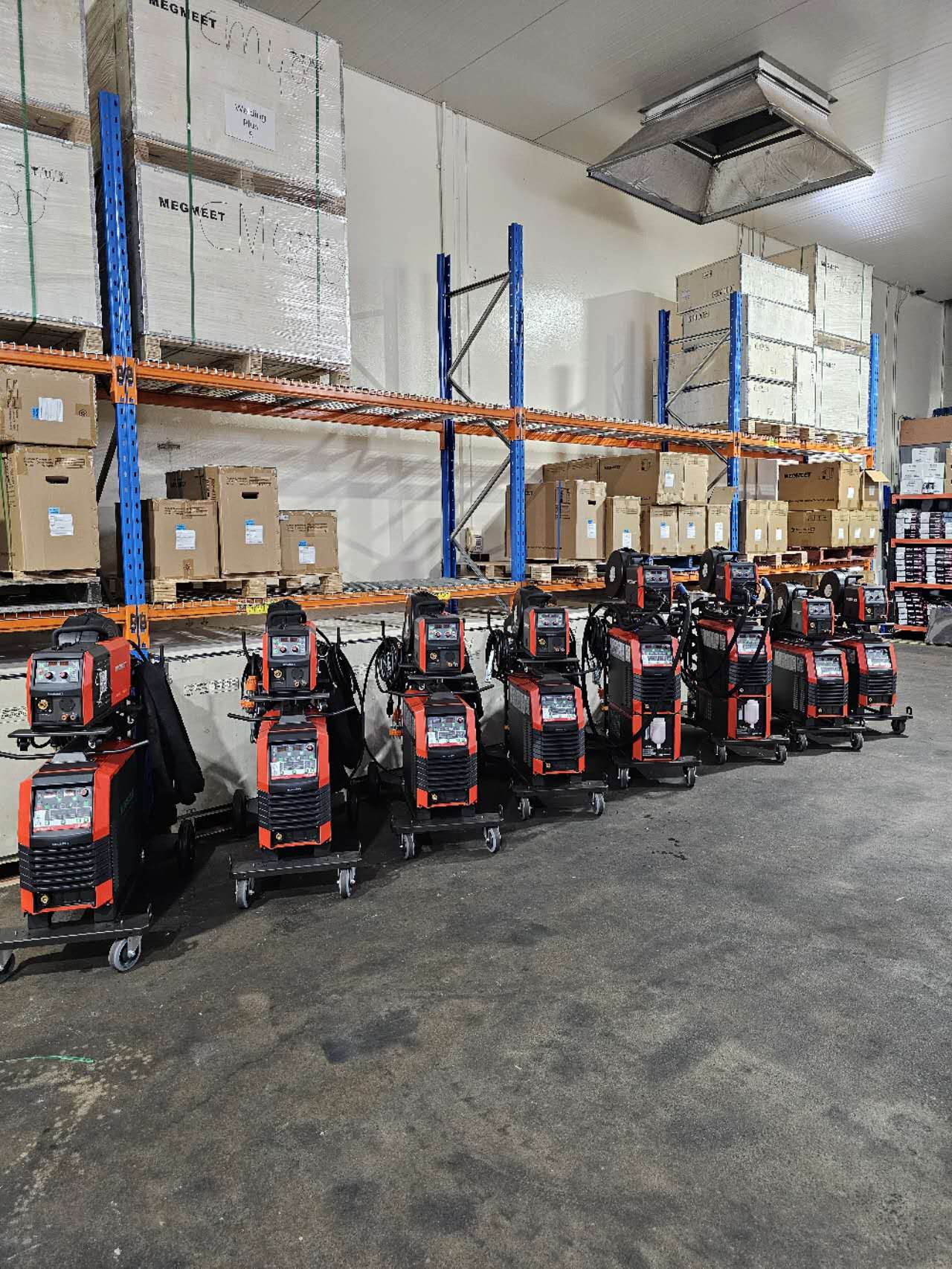A DC welding machine is a device that uses direct current to melt the welding rod and the workpiece, thereby achieving a metal connection. DC welding machines offer advantages such as stable current, high welding quality, and strong adaptability, making them widely used in welding various metal materials. However, during use, DC welding machines may encounter some faults that affect normal welding operations. This article will introduce common faults of DC welding machines and their troubleshooting methods, hoping to help you.

I. No Output or Unstable Output from the DC Welding Machine
This is a relatively common fault that may cause the welding machine to fail to operate normally or affect the welding quality. The possible causes of this fault include:
Power Line or Output Line Disconnection or Poor Contact: This can lead to voltage drops or fluctuations, affecting the size and stability of the output current. The inspection method is to use a multimeter to measure if the voltage at the input and output ends is normal and if the lines are intact.
Power Voltage is Too High or Too Low: This can cause the internal components of the welding machine to malfunction or trigger the protection circuit, causing the output to be interrupted or unstable. The inspection method is to use a multimeter to measure if the input voltage is within the rated value and if there is any phase loss or fluctuation.
Current Regulator Damage or Looseness: This can cause the output current to not match the set value or to change randomly. The inspection method is to use a multimeter to measure if the output current matches the regulator display and if the regulator is securely fixed.
Internal Component Damage or Aging: This can distort the output voltage or current or result in short circuits or open circuits. The inspection method is to use a multimeter to measure the resistance or continuity of internal components and check for signs of burning or deformation.
The solution is to replace or repair the damaged components or lines according to the inspection results, ensuring normal input and output.
II. Overheating or Smoking of the DC Welding Machine
This is a more serious fault that may cause damage to the welding machine or even a fire. The possible causes of this fault include:
Overloading of the Welding Machine: This can cause internal components to overheat beyond their tolerance, leading to burning or melting. The inspection method is to observe if the usage time and load rate exceed the specified values and if the overcurrent protection indicator is on.
Cooling System Failure: This can cause internal components to fail to dissipate heat effectively, leading to heat accumulation and temperature rise. The inspection method is to check if the cooling fan is working normally and if the temperature protection indicator is on.
Poor External Environment: This can lead to excessively high external temperatures, affecting internal heat dissipation, or the presence of flammable materials that can be ignited by sparks. The inspection method is to check if the operating environment is well-ventilated and free of oil, dust, and other contaminants.
The solution is to reduce the usage intensity or stop using the machine, enhance cooling or clean the radiator, improve the operating environment, or stay away from flammable materials according to the inspection results.
III. Electrified or Leaking Housing of the DC Welding Machine
This is a relatively dangerous fault that may cause electric shock or electric shock accidents to operators. The possible causes of this fault include:
Insulation Damage or Poor Contact of Power Line or Output Line: This can cause current to leak to the housing, forming a potential difference and leading to electric shock. The inspection method is to use a multimeter to measure if the voltage between the housing and the ground wire is zero and if the lines have cracks or wear.
Internal Component Short Circuit or Breakdown: This can cause internal current to flow to the housing, forming a potential difference and leading to electric shock. The inspection method is to use a multimeter to measure the continuity of internal components and check for signs of burning or deformation.
Improper Grounding: This can cause the housing to be ineffectively grounded, forming a potential difference and leading to electric shock. The inspection method is to use a multimeter to measure if the resistance between the grounding wire and the ground is zero and if the grounding wire is connected correctly.
The solution is to replace or repair the damaged components or lines according to the inspection results, ensure proper insulation, and correctly connect or correct the grounding wire to ensure reliable grounding.
A DC welding machine is a commonly used welding device, but it may encounter some faults during use that affect welding performance and safety. Therefore, it is essential to understand the common faults of DC welding machines and their troubleshooting methods to promptly detect and resolve issues, ensuring welding quality and the safety of operators and property. This article has introduced the causes, inspection methods, and solutions for three common faults: no output or unstable output, overheating or smoking, and electrified or leaking housing, hoping to provide you with some reference and assistance.
Related articles:
1. Common Electrical Welding Machine Defects and Solutions
2. Common Faults and Handling of Inverter Welding Machines
3. Internal and External Weld Seam Problems & Solutions of Pipeline
4. How to Solve 10 Common TIG Welding Problems [Guide]
5. Pulsed Welding Technology Solves Sheet Metal Problems




